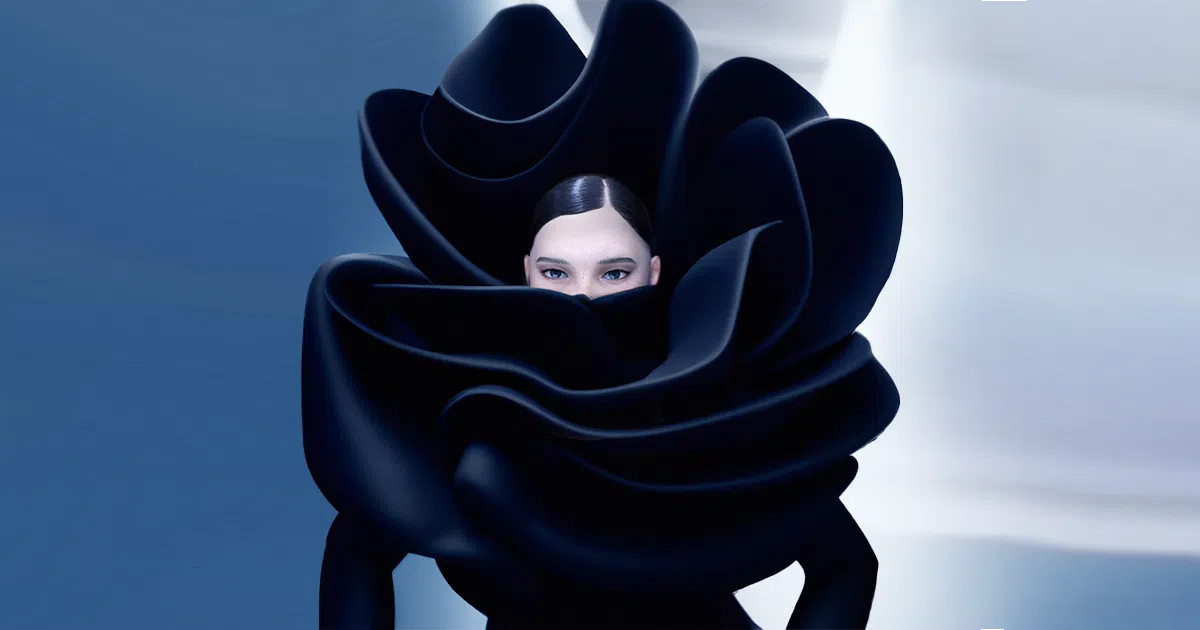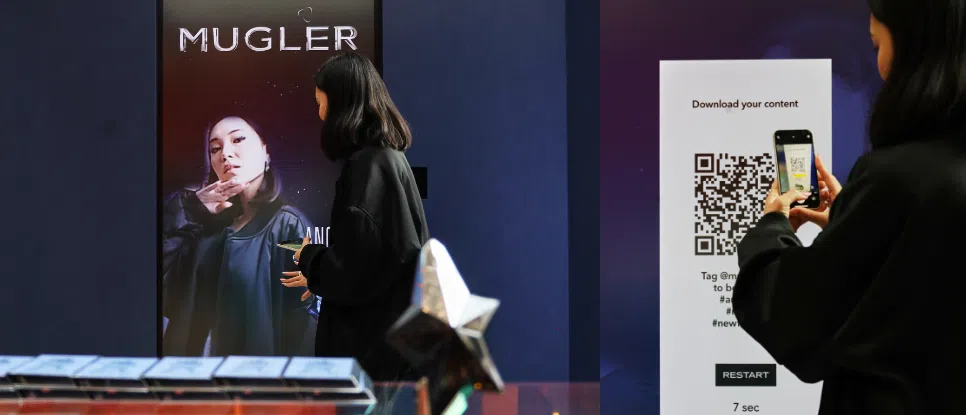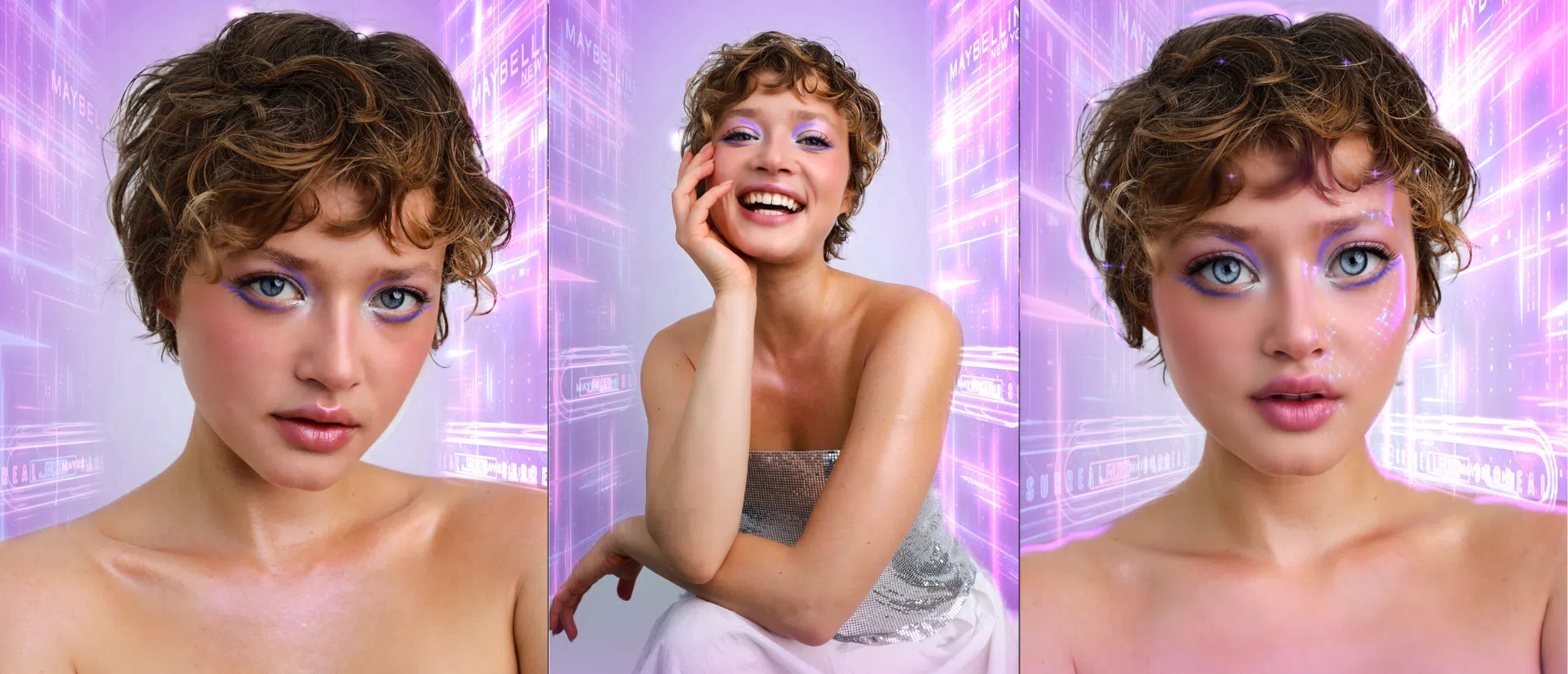AI против CGI: как выбрать правильную технологию для масштабного и эффективного визуального контента

Что такое CGI?
Представьте Computer-Generated Imagery (CGI) как вашу цифровую художественную студию. Эта технология позволяет создавать визуальный контент с помощью специализированного 3D- или 2D-программного обеспечения. Работая в Autodesk Maya, Blender или Unreal Engine, вы получаете полный творческий контроль над каждым аспектом проекта — от текстур и освещения до движения и окружения.
Изначально CGI прославилась в Голливуде и игровой индустрии, но сегодня она преобразует бизнес во множестве сфер. CGI используется для виртуальных модных показов, конфигураторов продуктов, интерактивных AR-зеркал и глобальных запусков брендов.
Как работает CGI
В отличие от автоматизированного подхода искусственного интеллекта, CGI представляет собой ручной, творчески управляемый процесс, состоящий из нескольких технических этапов.
Художники создают каждую деталь вручную: моделируют 3D-объекты, наносят текстуры, настраивают освещение и программируют анимацию.
Когда творческая работа завершена, компьютер рендерит все визуальные данные в готовые изображения или видеопоследовательности, которые затем проходят постобработку.
Такой кропотливый подход обеспечивает высочайшую степень точности — особенно важную для индустрий, где визуальное качество напрямую влияет на доверие потребителей: люкс, бьюти, архитектура.
Бизнес-применения CGI
Визуализация продуктов: создавайте фотореалистичные анимации товаров ещё до начала производства.
Виртуальная примерка: предоставьте клиентам возможность испытать продукт дистанционно — в сфере моды или косметики.
Цифровая мода: расширьте бренд в виртуальное пространство с помощью CGI-одежды, существующей только в цифровом виде.
AR/VR-опыт: визуализируйте будущие объекты недвижимости через CGI-прогулки по ещё не построенным пространствам.
Бренд-фильмы и реклама: если вашей истории нужна кинематографическая подача, CGI создаёт эффектные визуалы, способные впечатлить аудиторию.
Задайте себе вопрос: требует ли ваш проект визуального совершенства, реализма и глубокой интерактивности?
Если да — CGI станет идеальным решением.
Что такое генеративный искусственный интеллект (Generative AI)?
Вы уже знакомы с генеративным ИИ?
Эта технология использует модели машинного обучения, чтобы автоматически преобразовывать текстовые запросы, сценарии или наборы данных в видеоконтент.
Благодаря платформам вроде Runway, Pika, Synthesia или Hour One, можно масштабировать производство контента без увеличения команды.
В отличие от традиционного CGI, здесь вам не нужно вручную создавать каждую деталь — достаточно задать текстовые инструкции или варианты данных, и ИИ соберёт видео со сценами, движением, закадровым голосом и даже виртуальными ведущими.
Как работает Generative AI
Generative AI автоматизирует процесс визуального производства с помощью сложных моделей машинного обучения.
Он основан на диффузионных моделях и трансформерных нейросетях, обученных на огромных массивах видеороликов, изображений, голосов и текстов.
Когда вы вводите текстовые подсказки и элементы бренда, ИИ синтезирует контент, комбинируя элементы из базы знаний.
Всего за несколько минут вы получаете готовое видео, которое можно редактировать в реальном времени.
Такая эффективность радикально меняет подход к созданию рекламных кампаний, контента для соцсетей и внутренней коммуникации.
Бизнес-примеры использования Generative AI
Локализованная реклама в больших масштабах: создание десятков или сотен видеороликов для разных регионов и языков.
AI-аватары и виртуальные ведущие: производство многоязычных обучающих и презентационных видео на платформах вроде Synthesia или Colossyan.
Короткий контент для соцсетей: создание видео для TikTok, Instagram Reels и других платформ в актуальных визуальных форматах.
E-commerce-видео: автоматическая генерация видеороликов о товарах с динамическими шаблонами и визуалами.
Generative AI особенно полезен для задач, требующих скорости, гибкости и масштабируемости без потери качества.
Авторские права и владение: CGI vs AI
С CGI всё просто: это произведения, созданные человеком, поэтому они полностью защищены авторским правом.
Если контент создаётся вашей командой или подрядчиком, вы сохраняете коммерческие права использования в рамках договора.
Такая юридическая прозрачность особенно важна, если уникальные визуальные активы формируют основу ценности вашего бренда.
С AI-контентом всё сложнее.
Многие платформы обучаются на защищённых авторским правом материалах и не предоставляют пользователям полных коммерческих прав.
Иногда сервисы сохраняют долю прав на созданные материалы или требуют указания источника.
Эта правовая неопределённость может повлиять на безопасность бренда, оригинальность и защиту интеллектуальной собственности.
Регуляторные аспекты
США: Федеральная торговая комиссия (FTC) запрещает вводить потребителей в заблуждение с помощью ИИ-контента или фейковых отзывов.
Евросоюз: AI Act требует прозрачности для синтетических медиа и запрещает обман в высокорисковых случаях.
Великобритания: ASA рекомендует указывать использование ИИ в рекламе, где это может ввести в заблуждение.
Платформы: YouTube, Meta, Google Ads требуют маркировки ИИ-контента, особенно политического.
Как аудитория воспринимает CGI и AI
CGI воспринимается как человеческое ремесло, продуманное и эстетичное.
В индустриях моды, красоты и люкса такие визуалы укрепляют доверие и усиливают восприятие бренда.
AI-контент вызывает смешанную реакцию.
Исследования (ScienceDirect, Getty Images, NielsenIQ) показывают, что зрители меньше доверяют явно помеченному ИИ-контенту, даже если он качественный.
Оптимальным считается гибридный подход — сочетание ИИ-автоматизации с человеческим повествованием или голосом, что повышает уровень доверия и запоминаемость.
Рекомендации по выбору технологии
Используйте CGI, если:
Вам нужны чёткие права собственности и юридическая защита.
Визуальная составляющая — ключ к позиционированию бренда (люкс, красота, авто).
Вы создаёте долгосрочные или иммерсивные активы.
Используйте Generative AI, если:
Требуется быстрое создание больших объёмов контента.
Бюджет или время ограничены.
Вы проводите тесты, A/B-кампании или динамические коммуникации.
Комбинируйте обе технологии, если:
CGI-ассеты могут использоваться как основа для ИИ-видео.
Вы хотите сохранить IP, но при этом быстро адаптировать контент под разные рынки.
Заключение: стратегические шаги вперёд
CGI и Generative AI — не конкуренты, а взаимодополняющие инструменты.
CGI обеспечивает брендовое повествование и иммерсивный визуал,
в то время как AI даёт масштаб, персонализацию и скорость.
Совместное использование обеих технологий повышает эффективность, окупаемость инвестиций (ROI)
и укрепляет взаимодействие с аудиторией на всех цифровых платформах.

















